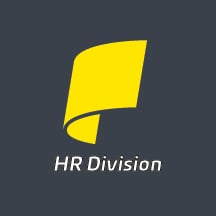From changing Covid-related safety regulations to complying with new labor laws at the federal, state, and local levels, many business owners and HR professionals face new obligations at the close of 2021. To help, we’ve created a comprehensive list of some of the most important HR tasks related to Payroll, Compliance, Benefits, and General HR. Here’s your year-end HR Checklist for 2021.
PAYROLL AND TAX
Review ARPA Provisions for Employee Retention Credits. Under the American Rescue Plan Act of 2021 (ARPA), eligible employers can claim tax credits for paying qualified wages to employees they retained on their payroll during the pandemic through Dec. 31, 2021.
Audit Payroll Balances. Audit any payroll balances for policies that are calendar year based for any carry-over practices, reminders, and any negative balances to address.
Review Deferred Tax Responsibilities Under the CARES Act. If you took advantage of the CARES Act’s employer Social Security tax deferral for 2020, you must pay the first 50 percent of your deferred taxes by Dec. 31, 2021. The remaining 50 percent is due Dec. 31, 2022.
Prepare FICA and FUTA forms. IRS (FICA) Form 941 is due Oct. 31, 2021, for Q3 2021, and Jan. 31, 2022, for Q4. Federal unemployment tax (FUTA) Form 940 is due Jan. 31, 2022. However, if you deposited all FUTA tax by the deadline, you have until Feb. 10, 2022, to file. If you claim certain nonrefundable tax credits, note changes made on Form 941 for reporting tax liabilities.
COMPLIANCE
Review Mandates under President Biden’s New Covid Plan. President Biden recently announced a new Covid-19 strategy which OSHA will implement through an Emergency Temporary Standard (ETS). Key mandates in the new plan include:
- Employers with 100+ Employees to Ensure their Workers are Vaccinated or Tested Weekly
- Vaccinations for Contractors that Do Business with the Federal Government
- Vaccinations for Health Care Workers at Medicare and Medicaid Participating Hospitals and Other Health Care Settings.
- Employers to Provide Paid Time Off to Get Vaccinated
The requirements go into effect immediately upon publication of the ETS in the Federal Register. Determine how these mandates, as well as all of the provisions of this new law, may impact your business.
Review Expanded EEO Laws for Discrimination during the Covid-19 pandemic. The Equal Employment Opportunity Commission (EEOC) updated and expanded guidance regarding federal Equal Employment Opportunity laws to help employees and employers understand their rights and responsibilities at work during the pandemic.
Review the Laws in the City and State Where Employees are Working. In addition to federal laws, employers must also follow the state laws where their employees work – a compliance challenge, especially for multi-state employers. While not all state labor laws apply to every business, employers should be familiar with the laws that do and understand the requirements of each law.
Read More: Navigating State Laws and Covid-19
Update Workplace Labor Posters and Notices. Requirements for posting labor posters differ by state, such as EEOC notices about employment rights, FLSA minimum wage posters, and OSHA notices about workplace safety. If there are any updates to the posters in your operating states, you will want to update your wall posters or electronic posters to remote employees.
Review All Insurance Policies including Workers’ Comp. Contact your insurance broker to determine if you need to adjust your liabilities to cover additional exposure. Also, check with your Workers’ Compensation broker to determine if any changes in your work environment or staff work assignments may affect your exposure and codes currently on your account.
File EEO-1 Component 1 Report. Under federal law, businesses with 100 or more employees and federal contractors with 50 or more employees must file an EEO-1 Component report each year. The demographic workforce data includes information about race/ethnicity, sex, and job categories. On Aug. 18, 2021, the Equal Employment Opportunity Commission (EEOC) extended the EEO-1 filing deadline for 2019 and 2020 EEO-1 reports to Oct. 25, 2021.
Prepare and Distribute Annual Compliance Notices. Each year, your business may be required to distribute certain compliance notices to employees. Examples include a Summary of Benefits and Coverage (SBC), privacy practices on personal health information (HIPPA), the Children's Health Insurance Program Reauthorization Act on health coverage assistance (CHIPRA), Women’s Health and Cancer Rights Act (WHCRA), and COBRA General Rights and Elections notices.
Also, make sure that your wellness program follows the compliance requirements under Equal Employment Opportunity Commission (EEOC), Americans with Disabilities Act (ADA), and Genetic Information Nondiscrimination Act (GINA).
Read More: How Outsourcing Can Be a Valuable Partner to HR Teams
Check All Required Compliance Training. Check all federal, state, and industry workplace training requirements that apply to your business, as well as workplace training mandated in your state. For example, many states require Covid-19 workplace safety training and best practices for sexual harassment training. However, if Covid-19 training is not required in your state, employers should consider workplace training consistent with OSHA and CDC guidelines.
BENEFITS
Audit FTEs for ACA Compliance. An Applicable Large Employer (ALE) is an employer with 50 or more full-time and FTE employees. Under the Affordable Care Act (ACA), an ALE must offer health coverage and meet certain annual reporting requirements.
To determine if your business is an ALE and must comply with ACA in 2022, audit your FTEs for each month of 2021 to determine if you have reached or exceeded 50 full-time and/or full-time equivalent employees. ALEs that fail to provide full-time workers with minimum essential coverage that meets the affordability threshold are subject to two different penalties, which the IRS refers to as shared-responsibility payments.
Audit FTEs for FMLA Compliance. Audit your FTEs to determine if you have reached or exceeded 50 employees and are required to comply with the Family Medical Leave Act (FMLA) in 2022. Employers covered by the FMLA are obligated to provide their employees with certain important FMLA notices, so both employees and the employer have a shared understanding of the terms of the FMLA leave. Note that FMLA compliance requirements are different from ACA compliance.
Review 2022 Health Plans Against New Affordability Thresholds. Review your employee health plan to make sure it satisfies the Affordable Care Act (ACA) affordability threshold requirements. The affordability threshold is the highest percentage of household income an employee must pay for monthly health insurance plan premiums, based on the least expensive employer-sponsored plan offered that meets the minimum essential coverage requirements required under the ACA. The IRS lowered the 2022 employer health plan affordability threshold, or cost-sharing limit, to 9.61% of an employee’s income. The threshold in 2021 was 9.83%.
Prepare and Distribute Annual Medicare Part D. If you provide prescription drug coverage, you must distribute a creditable coverage notice, Medicare Part D, to participants by Oct. 15, 2021. Participants may join a Medicare Part D plan during the annual election period, Oct. 15 to Dec. 7, 2021.
Read More: Turning Stigma Into Support
Enhance Your Employee Benefits Package. A competitive benefits package is key to keeping and attracting top talent. Assess your current benefits package and consider making necessary adjustments to include options, such as expanded mental health support, for example.
GENERAL HR
Review Employee Records. The fourth quarter is a good time to review your employee records and check record retention guidelines. Don’t forget to dispose of outdated termination and outdated job applications properly. With W2s around the corner, make sure all addresses and information are updated.
Develop and Distribute Your 2022 Calendar. Create and distribute a calendar outlining important dates, vacation time, pay dates, and company-observed holidays for 2022.
Review and Update Employee Handbook. Review your employee handbook to make sure it is up-to-date and addresses areas, such as employment law mandates, new COVID-related policies, guidelines for remote working, privacy policies, compensation and performance reviews, social media policies, attendance, and time-off, break periods, benefits, and procedures for termination, discipline, workplace safety, and emergency procedures.
PLEASE NOTE: This information is for general reference purposes only. Because laws, regulations, and filing deadlines are likely to change, please check with the appropriate organizations or government agencies for the latest information and consult your employment attorney and/or benefits advisor regarding your responsibilities. In addition, your business may be exempt from certain requirements and/or be subject to different requirements under the laws of your state. (Updated Oct. 4, 2021)
 About Propel HR. Propel HR is an IRS-certified PEO that has been a leading provider of human resources and payroll solutions for 25 years. Propel partners with small to midsized businesses to manage payroll, employee benefits, compliance and risks, and other HR functions in a way that maximizes efficiency and reduces costs.
About Propel HR. Propel HR is an IRS-certified PEO that has been a leading provider of human resources and payroll solutions for 25 years. Propel partners with small to midsized businesses to manage payroll, employee benefits, compliance and risks, and other HR functions in a way that maximizes efficiency and reduces costs.










